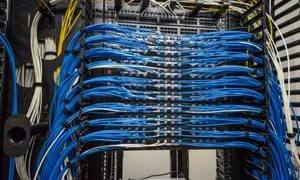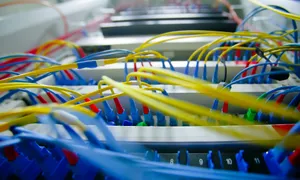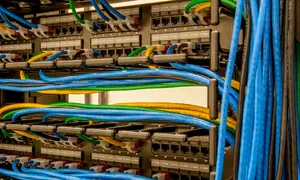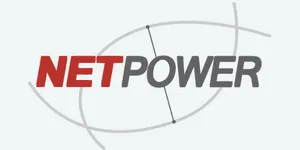High Speed Data Cabling |
Fiber-Optic Cabling
Commercial Data Cabling
Don't let your business outgrow your network. Upgrade your data cabling for more reliability, bandwidth, and high speed connections.



HIGH SPEED DATA CABLING |
FIBER-OPTIC CABLING
Business
Data Cabling
Don't Let Your Business Outgrow Your Network. Upgrade Your Data Cabling For More Reliability, Bandwidth, and High Speed Connections.



Data Cabling, POE and
Structured Wiring

Your network's reliability, bandwidth and speed all depend on the data cabling throughout your business. As the number of employees and connected devices grow you may need to consider updating your network cabling for high speed connections.
High Speed Fiber-
Optic Cabling

Fiber-optic cabling provides unmatched speed and latency for any devices with a wired internet connection. As the use of video conferencing platforms like Zoom has sky-rocketed this year so has the demand for high speed fiber-optic cabling installation.
Frequently Asked Questions
About Data Cabling
Q: What is the difference between CAT5 and CAT5e Cables?
A: CAT5 and CAT5e cables are both 24 gage twisted pair wires with standard RJ45 connections. The differences are shown in speed and bandwidths of the cables. CAT5 cables have a bandwidth of only 100 MHz while CAT5e cables are capable of 350 MHz. The higher bandwidth of the CAT5e cables allows for a Gigabit Ethernet connection to be carried up to 100 meters or 328 feet.
Q: What is the difference between CAT6 and CAT6a cables?
A: CAT6A maintains bandwidth frequencies of up to 500 MHz which is double that of the standard CAT6 cable. Both CAT6 and CAT6A are capable of 10 Gigabit Ethernet speeds but a CAT6 cable can only maintain such speeds for up to 37 meters. CAT6A cables can carry 10 Gigabit Ethernet to distances of 100 meters.
Q: What is structured cabling?
A: Structured cabling (or structure wiring) will make troubleshooting your network a walk in the park compared to standard cable runs. Enclosures are used to house POE modules and other equipment as well as to label and organize all of the data cable connections. Having all of the connections and cables neatly organized will save hours of time when troubleshooting a single bad connection, port, or cable.
Q: Is structured cabling required for all data cable systems?
A: Although structured cabling enclosures are not required to run data cables they are highly recommended. Not only does a structured system look professional but it will allow maintenance, upgrades and repairs to be quick and simple.
Data Cabling, POE and
Structured Wiring

Your network's reliability, bandwidth and speed all depend on the data cabling throughout your business. As the number of employees and connected devices grow you may need to consider updating your network cabling for high speed connections.
High Speed Fiber-
Optic Cabling

Fiber-optic cabling provides unmatched speed and latency for any devices with a wired internet connection. As the use of video conferencing platforms like Zoom has sky-rocketed this year so has the demand for high speed fiber-optic cabling installation.
Leave Your Info and We'll
Be With You Soon
Recent Installs



2025 - NETPOWER Inc. - All Rights Reserved
Web Design By: MAT Tech Specialties
Frequently Asked Questions
About Data Cabling
Q: What is the difference between CAT5 and CAT5e Cables?
A: CAT5 and CAT5e cables are both 24 gage twisted pair wires with standard RJ45 connections. The differences are shown in speed and bandwidths of the cables. CAT5 cables have a bandwidth of only 100 MHz while CAT5e cables are capable of 350 MHz. The higher bandwidth of the CAT5e cables allows for a Gigabit Ethernet connection to be carried up to 100 meters.
Q: What is the difference between CAT6 and CAT6a cables?
A: CAT6A maintains bandwidth frequencies of up to 500 MHz which is double that of the standard CAT6 cable. Both CAT6 and CAT6A are capable of 10 Gigabit Ethernet speeds but a CAT6 cable can only maintain such speeds for up to 37 meters. CAT6A cables can carry 10 Gigabit Ethernet to distances of 100 meters.
Q: What is structured cabling?
A: Structured cabling (or structure wiring) will make troubleshooting your network a walk in the park compared to standard cable runs. Enclosures are used to house POE modules and other equipment as well as to label and organize all of the data cable connections. Having all of the connections and cables neatly organized will save hours of time when troubleshooting a single bad connection, port, or cable.
Q: Is structured cabling required for all data cable systems?
A: Although structured cabling enclosures are not required to run data cables they are highly recommended. Not only does a structured system look professional but it will allow maintenance, upgrades and repairs to be quick and simple.
Leave Your Info and We'll
Be With You Soon
Recent Installs



PO Box 11025
Torrance, CA 90510
Contractor License 909055 | Bond xxxxxxx
Insured by: insurance company
Main Office Phone: 310-634-1450

